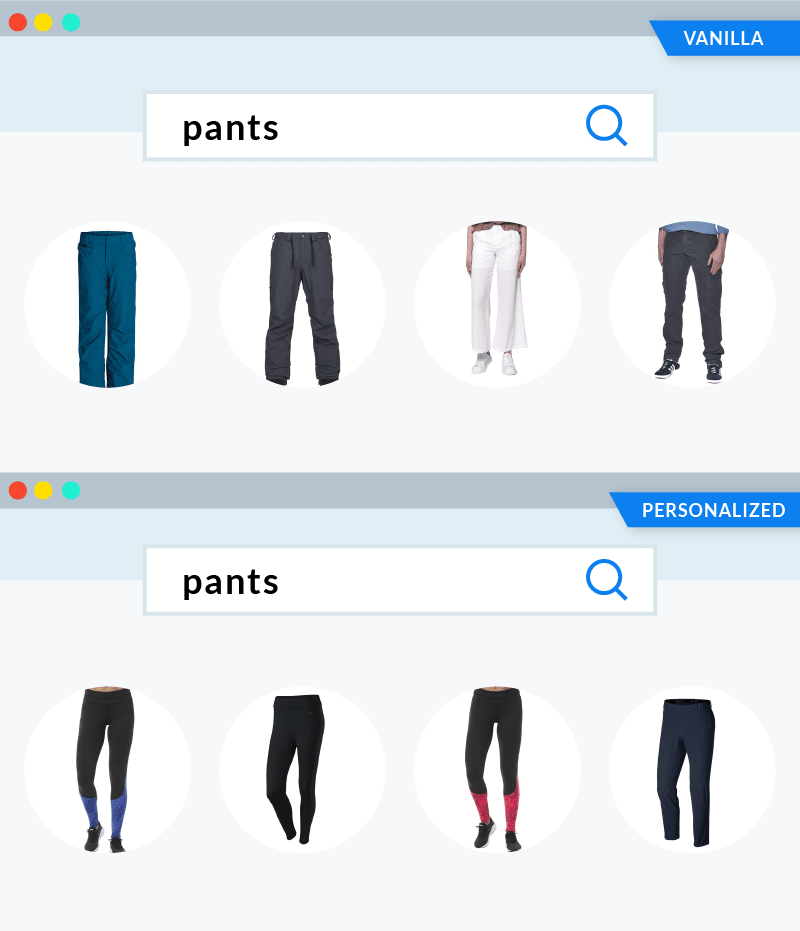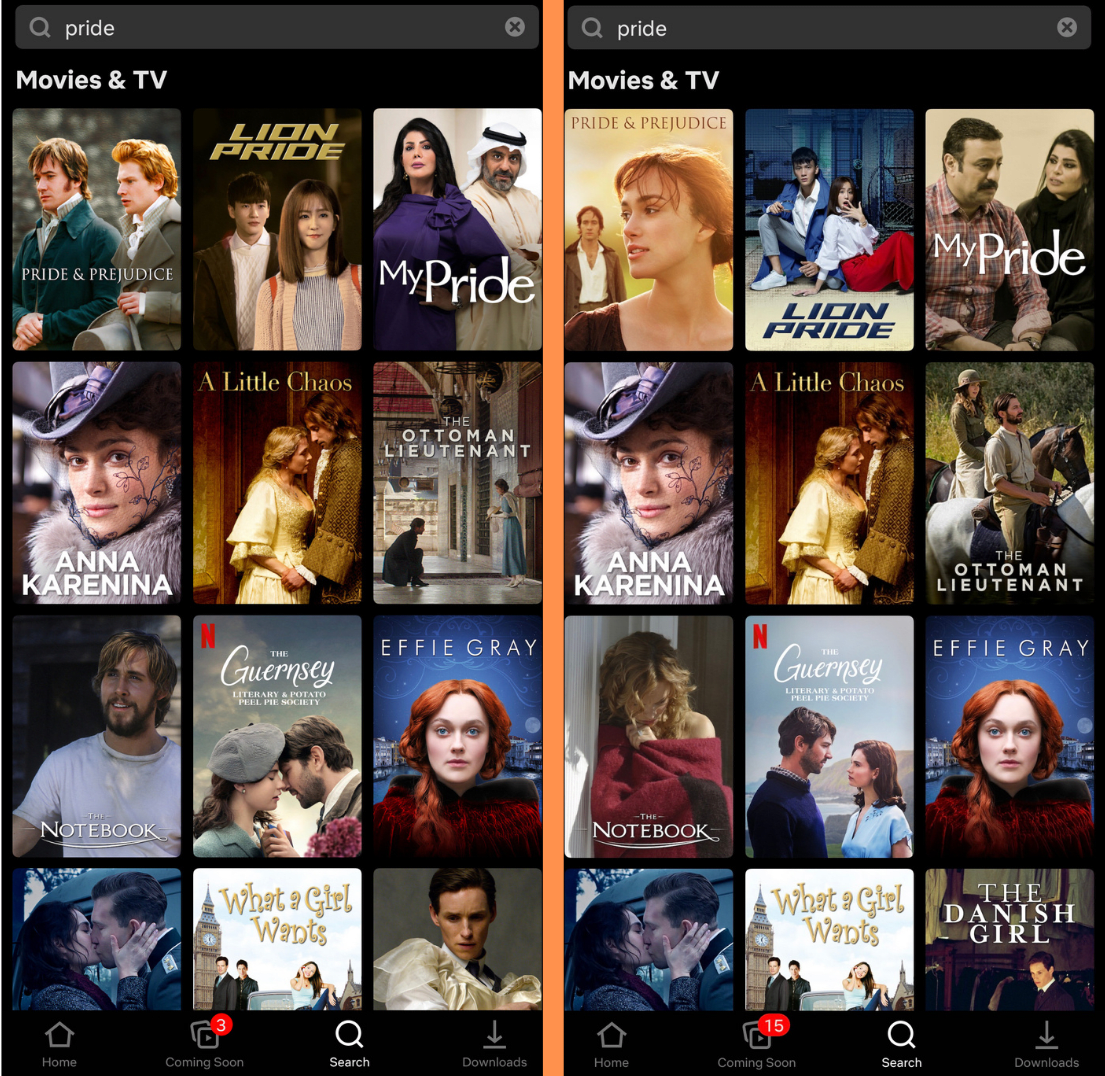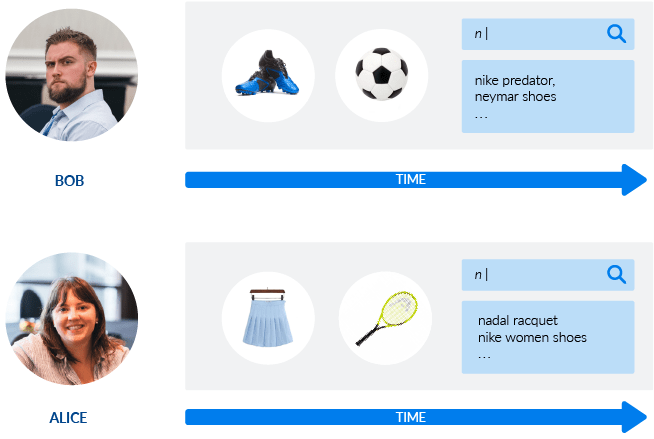For decades, marketers have been staking their careers on segmentation and persona-based marketing. By creating a fictionalized representation of a potential buyer — such as an avocado-toast-eating urban millennial or a middle-aged suburban soccer mom — brands have been shaping and reshaping their products and services based on what they believe those characters need and want.

The problem with doing so is that most consumers don’t fit in one persona category. This is especially true in today’s digital economy, which has enabled people to see (and get their hands on) more products and product information than ever before. Thanks to social media and the explosion of Ecommerce, both the millennial and the soccer mom are just as likely to buy a Vitamix, a Peloton and an SUV with a backup camera.
The Changing Consumer
Consumers today are hard to categorize because they don’t just have one area of interest (and arguably never did). With a plethora of information at their disposal, shoppers can determine what they want and need entirely on their own. That’s a disruption for brands — they are no longer in charge.

Given that needs are now consumer-generated as opposed to brand-dictated, power has shifted to the consumer, and marketers now have a new mandate: to uncover exactly what each of their growing number of customers needs. “Motivating consumers today has nothing to do with getting their attention and everything to do with their [sic] understanding their context – that is, their current position in time and space whatever their task may be in that moment,” says Mathew Sweezey, in The Context Marketing Revolution.
Not only are marketers required to uncover what a customer needs, but they also need to act upon that information to provide it to them in turn. And thanks to powerhouses like Amazon, consumers expect this kind of personalized experience.
That being said, there is good news for brands, as they now have the ability to reach a wider audience. But that comes with the added challenge of meeting each member of that growing shopper audience where they are and giving them what they want in that moment.
Multi-Dimensional Nature of a ‘Persona’
Marketers initially attempted to capture our ‘multi-dimensional’ nature by using segmentation, as it was the only method at their disposal. To echo journalist and author Malcom Gladwell, manually mapping out and categorizing people into ‘personas’ was a way to break from giving everyone one flavor of ‘Ragu’. Now, we no longer have to rely on manual rules and tagging people to ‘categories’ – we can let the computational power of AI find the rules and automatically create logical clusters around affinities to determine what people actually want and need at an individual level.

Thanks to technologies like artificial intelligence and machine learning, marketers can develop those insights regarding context and intent in real-time and deliver the personalized shopping experience that their customers expect.
Unlike a team of marketers brainstorming in a conference room (or a Zoom call in the COVID-19 era), AI doesn’t guess what a potential customer might want. Instead, it uses data from search queries, viewing history, past purchases and social media recommendations to determine consumer intentions and act upon them. While assumptions are still made regarding the link between past and present behavior and future buying patterns; it’s based on fact, not fictionalized characters, to provide a more predictive, personalized, and fulfilling customer experience.
From Persona to Personalization with Content-based Filtering
The AI-driven strategy drives what we marketers sometimes refer to as “content-based filtering,” which is increasingly used in digital services to help predict what someone will view or buy based on what they, as an individual, interact with over time. It takes the guesswork out of personas and creates a more targeted marketing strategy based on personalization.

It’s changing the marketing game, for the better, argues digital marketing guru Seth Godin.
“You used to be able to hustle people or hype people by using social pressure to get their attention and make a sale. And you used to be able to use geographic proximity and 400 other techniques to get in front of someone who wasn’t on the journey, and somehow sell them on the next step,” Godin said during a recentroundtable discussion hosted by Coveo SVP of Product & Industry Marketing Mark Floisand.
“And now, if they’re not enrolled in where you’re going, if they’re not people like us, if they don’t see themselves on the journey you’re on – your ability to grab them is very low. That spamming hustling hyping, no one ever liked that, but we didn’t have a lot of choice, and now we do. What you get to do [today] is find the people who want to go where you are already going. And so the race in the future is to raise your flag and say, ‘if you want this we have it.’”
The Demise of Personas: Content-Based Filtering in Practice
Perhaps one of the best examples of content-based filtering success is Netflix, an entertainment company and a data science business, which uses machine learning to analyze viewing patterns, predict what you’re likely to watch next, and place it right in front of your face.

Netflix is one of the best direct-to-consumer companies out there,LinkedIn states in an article titled, The Death of Personas. It points out the streaming giant’s ability to not only recommend what you like based on past picks but also change the photos on your favorite shows to pull you in.
For instance, the article notes that if Netflix classifies you as a “romantic persona,” you’ll see Minnie Driver and Matt Damon kissing when scrolling over the film Good Will Hunting. If you’re considered a “comedic persona,” you’ll see a picture of funny man Robin Williams (may he rest in peace) when scrolling over the same film.

Creepy, yes. Ingenious, yes to that too. Regardless of how you view it, it’s working very well for Netflix not just on the bottom line, with a Nasdaq market valuation of around US$225-billion, but with industry respect: The entertainment company was nominated for 17 Golden Globe Awards in 2020, the most of any studio that year.
Another great example of content-based filtering often cited is Etsy, the Ecommerce giant for handmade goods. Etsy, valued at about US$20-billion on the Nasdaq today, is an online shopping paradise as well as a data science and machine learning powerhouse, with engineers and scientists that it says, “improve the lives of millions of buyers and sellers on Etsy around the world.” Etsy has also taught its search engine to understand styles its consumers might like, such as something ‘romantic’ or ‘rustic’, according to its chief technology officer Mike Fisher inan interview with Fast Company.
AI isn’t just smarter than your human marketing team (no offense) when it comes to collecting, analyzing and acting on customer data; it can also handle change more easily.
In a recent AdobeDigital Experience blog titled, The Customer Persona is Dead! Long Live the Customer Profile!, author Vincenzo de Simone says the “beauty of AI” is that the technology develops on its own. “Today’s algorithms are constantly testing and learning about customer behavior at speed and on an incredibly large scale,” he writes.

“AI is like a new employee you need to train before they take on more responsibility. And it’s learning fast. It will become the marketer’s ultimate assistant, predicting what we’re going to do next and providing us with added insight to ensure we make the best possible decision every time.”
The Rise of Relevance
We feel bad picking on personas, which was a great way for marketers to target consumers before technology took over the world. While personas have helped marketersput themselves in their customer’s shoes over the years, the digital revolution has made this made-up world increasingly irrelevant. Marketers need to move beyond dictating needs, and instead respond to existing individual needs.
So how can marketers ditch their traditional persona-based plans and focus more on personalization?
They must sunset the static stereotypes of consumers and instead focus on finding ways to follow their ever-changing moods and buying patterns. This involves applying AI to uncover the intent that each shopper carries with them when they arrive and provide the most relevant experience to each in turn.
The use of content-based filtering is powerful in this sense, as it enables brands to do just that and improve the customer experience in real-time – even in exceptionally complicated cases, such as that of the urban millennial who suddenly moved back to their small hometown and started working out of their childhood bedroom in the middle of a global pandemic. And the best part is that recommender systems like this don’t require brands to have massive amounts of data at their disposal. Instead, it allows them to make the most of what they already have to competitively deliver personalized experiences as we enter 2021.
Dig Deeper
Applying AI to uncover shopper intent is the first step in responding to consumer-generated needs with the relevant experience they expect – acting upon that insight to give them what they need comes next.
To learn more about what this personalized experience should actually look like and how you can do it without a ton of data, read Powerful Personalization in Ecommerce – No Big Data Required.
And to discover all that’s possible with AI in Ecommerce, check out Coveo Ecommerce: Intelligent shopping, more conversions.


